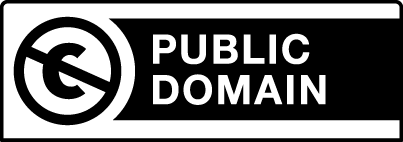| Title: | Iarc Monographs: 40 Years Of Evaluating Carcinogenic Hazards To Humans |
| Author: | Pearce, Neil
Blair, Aaron
Vineis, Paolo
Ahrens, Wolfgang
Andersen, Aage
Antó i Boqué, Josep Maria
Armstrong, Bruce K.
Baccarelli, Andrea A.
Beland, Frederick A.
Berrington, Amy
Bertazzi, Pier Alberto
Forastiere, Francesco
Hemon, Denis
Frentzel-Beyme, Rainer
Fritschi, Lin
Kjuus, Helge
Gerin, Michel
Goldberg, Marcel
Grandjean, Philippe
Grimsrud, Tom K.
Haines, Andy
Kriebel, David
Hartge, Patricia
Hertz-Picciotto, Irva
Hansen, Johnni
Hauptmann, Michael
Heederik, Dick J. J.
Hemminki, Kari
Hoppin, Jane A.
Lynch, Charles F.
Huff, James
Kogevinas, Manolis
Merchant, James A.
Jarvholm, Bengt
Kang, Daehee
Karagas, Margaret R.
Kjaerheim, Kristina
Kristensen, Petter
Kromhout, Hans
Parent, Marie‑Elise
Laden, Francine
Lebailly, Pierre
Lemasters, Grace
Lubin, Jay H.
Lynge, Elsebeth
Perry, Melissa J.
Mannetje, Andrea 't
Merler, Enzo
McMichael, Anthony J.
McLaughlin, John R.
Marrett, Loraine
Martuzzi, Marco
Merletti, Franco
Ritter, Leonard
Miller, Anthony B.
Perera, Federica P.
Sandler, Dale P.
Mirer, Franklin E.
Monson, Richard
Nordby, Karl-Cristian
Olshan, Andrew F.
Pesatori, Angela Cecilia
Pirastu, Roberta
Simonato, Lorenzo
Porta, Miquel, 1957-
Pukkala, Eero
Rice, Carol
Richardson, David B.
Ritz, Beate
Smith, Martyn T.
Ronckers, Cecile M.
Sanjosé Llongueras, Silvia de
Rushton, Lesley
Rusiecki, Jennifer A.
Rusyn, Ivan
Samet, Jonathan M.
Schernhammer, Eva
Stewart, Bernard W.
Seniori Costantini, Adele
Smith, Allan H.
Vermeulen, Roel C. H.
Seixas, Noah
Shy, Carl
Siemiatycki, Jack
Silverman, Debra T.
Spinelli, John J.
Spitz, Margaret R.
Birnbaum, Linda S.
Stallones, Lorann
Stayner, Leslie T.
Steenland, Kyle
Stenzel, Mark
Stewart, Patricia A.
Bucher, John R.
Symanski, Elaine
Victora, Cesar G.
Terracini, Benedetto
Tolbert, Paige E.
Vainio, Harri
Vena, John
Ward, Elizabeth M.
Comba, Pietro
Weinberg, Clarice R.
Brownson, Ross C.
Fletcher, Tony
Weisenburger, Dennis D.
Wesseling, Catharina
Weiderpass, Elisabete
Hoar Zahm, Shelia
Cantor, Kenneth P.
Cardis, Elisabeth
Demers, Paul A.
Cherrie, John W.
Christiani, David C.
Cocco, Pierluigi
Coggon, David
Dement, John M.
Gustavsson, Per
Douwes, Jeroen
Fontham, Elizabeth
Eisen, Ellen A.
Engel, Lawrence S.
Fenske, Richard A.
Fleming, Lora E. |
| Keywords: | Càncer
Cancer |
| Issue Date: | 1-Jun-2015 |
| Publisher: | National Institute of Environmental Health Sciences |
| Abstract: | BACKGROUND: Recently, the International Agency for Research on Cancer (IARC) Programme for the Evaluation of Carcinogenic Risks to Humans has been criticized for several of its evaluations, and also for the approach used to perform these evaluations. Some critics have claimed that failures of IARC Working Groups to recognize study weaknesses and biases of Working Group members have led to inappropriate classification of a number of agents as carcinogenic to humans. OBJECTIVES: The authors of this Commentary are scientists from various disciplines relevant to the identification and hazard evaluation of human carcinogens. We examined criticisms of the IARC classification process to determine the validity of these concerns. Here, we present the results of that examination, review the history of IARC evaluations, and describe how the IARC evaluations are performed. DISCUSSION: We concluded that these recent criticisms are unconvincing. The procedures employed by IARC to assemble Working Groups of scientists from the various disciplines and the techniques followed to review the literature and perform hazard assessment of various agents provide a balanced evaluation and an appropriate indication of the weight of the evidence. Some disagreement by individual scientists to some evaluations is not evidence of process failure. The review process has been modified over time and will undoubtedly be altered in the future to improve the process. Any process can in theory be improved, and we would support continued review and improvement of the IARC processes. This does not mean, however, that the current procedures are flawed. CONCLUSIONS: The IARC Monographs have made, and continue to make, major contributions to the scientific underpinning for societal actions to improve the public's health. |
| Note: | Reproducció del document publicat a: https://doi.org/10.1289/ehp.1409149 |
| It is part of: | Environmental Health Perspectives, 2015, vol. 123, num. 6, p. 507-514 |
| URI: | https://hdl.handle.net/2445/125713 |
| Related resource: | https://doi.org/10.1289/ehp.1409149 |
| Appears in Collections: | Articles publicats en revistes (Institut d'lnvestigació Biomèdica de Bellvitge (IDIBELL))
|



